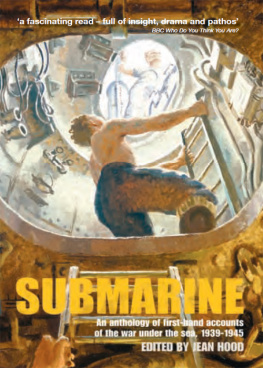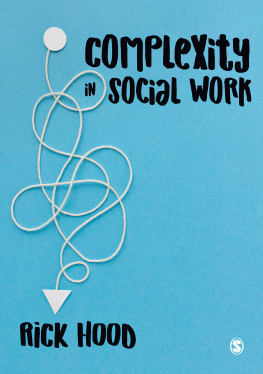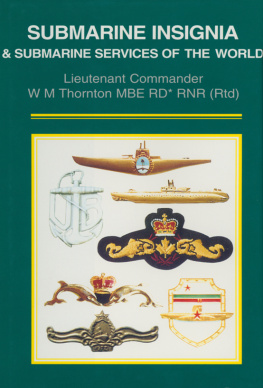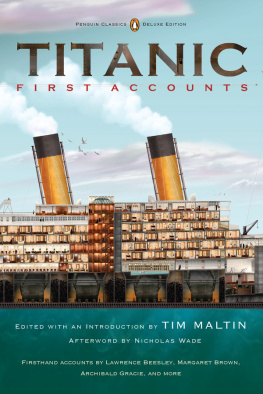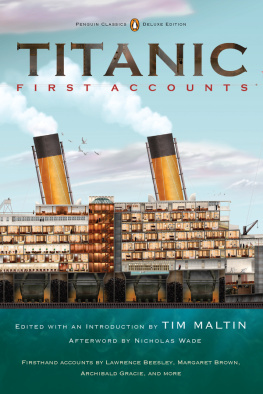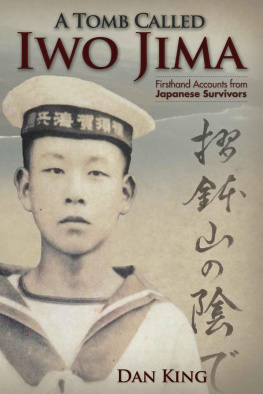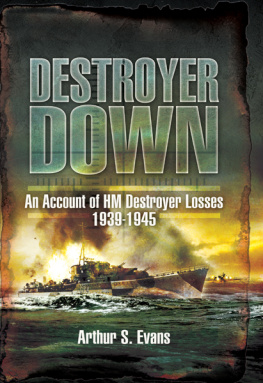Hood - Submarine: an anthology of firsthand accounts of the war under the sea, 1939-45
Here you can read online Hood - Submarine: an anthology of firsthand accounts of the war under the sea, 1939-45 full text of the book (entire story) in english for free. Download pdf and epub, get meaning, cover and reviews about this ebook. City: London, year: 2012;2007, publisher: Bloomsbury UK;Conway, genre: Romance novel. Description of the work, (preface) as well as reviews are available. Best literature library LitArk.com created for fans of good reading and offers a wide selection of genres:
Romance novel
Science fiction
Adventure
Detective
Science
History
Home and family
Prose
Art
Politics
Computer
Non-fiction
Religion
Business
Children
Humor
Choose a favorite category and find really read worthwhile books. Enjoy immersion in the world of imagination, feel the emotions of the characters or learn something new for yourself, make an fascinating discovery.
- Book:Submarine: an anthology of firsthand accounts of the war under the sea, 1939-45
- Author:
- Publisher:Bloomsbury UK;Conway
- Genre:
- Year:2012;2007
- City:London
- Rating:5 / 5
- Favourites:Add to favourites
- Your mark:
- 100
- 1
- 2
- 3
- 4
- 5
Submarine: an anthology of firsthand accounts of the war under the sea, 1939-45: summary, description and annotation
We offer to read an annotation, description, summary or preface (depends on what the author of the book "Submarine: an anthology of firsthand accounts of the war under the sea, 1939-45" wrote himself). If you haven't found the necessary information about the book — write in the comments, we will try to find it.
Submarine: an anthology of firsthand accounts of the war under the sea, 1939-45 — read online for free the complete book (whole text) full work
Below is the text of the book, divided by pages. System saving the place of the last page read, allows you to conveniently read the book "Submarine: an anthology of firsthand accounts of the war under the sea, 1939-45" online for free, without having to search again every time where you left off. Put a bookmark, and you can go to the page where you finished reading at any time.
Font size:
Interval:
Bookmark:

P RAISE FOR S UBMARINE
Jean Hood has created a lasting tribute to all those who fought and died in these iron coffins.
Jeff Tall, OBE, RN, Royal Navy Submarine Museum
It is the sheer volume and breadth of information that will appeal both to the naval history buff, as well as the genealogist.
BBC Who Do You Think You Are?
clearly a high-quality production.
Nautilus UK Telegraph
a solid work that not only fills a gap in the recorded history of the war but can also be used as an overall view of it.
Marine Modelling
Scores of gripping yarns of terror and humour from some of the most daring men of World War II.
News of the World
certain to appeal to anyone interested in the human side of war at sea between 1939 and 1945.
Warship International Fleet Review
far more than an account of WWII missions.
Best of British

For George Hunt, Mario Rossetto,
Volkmar Knig and Aart Hopman
A Conway Maritime book
Jean Hood, 2007
Foreword Rear Admiral D. J. Cooke, MBE, 2007
First published in Great Britain in 2007 by Conway,
First paperback edition published in 2009 by Conway
an imprint of Anova Books Company Limited,
10 Southcombe Street,
London W14 0RA
www.anovabooks.com
www.conwaymaritime.com
All rights reserved. No part of this publication may be reproduced, stored in a retrieval system, or transmitted in any form or by any means electronic, mechanical, photocopying, recording or otherwise, without the prior written permission of the copyright owner.
Jean Hood has asserted her moral right to be identified as the author of this work.
British Library Cataloguing in Publication Data:
A catalogue record for this book is available from the British Library
ebook ISBN: 9781844861613
Editing and design by DAG Publications Ltd
Printed and bound by Athenaeum Press, Ltd., Gateshead, Tyne & Wear
To receive regular email updates on forthcoming Conway titles, email with Conway Update in the subject field.
by Rear Admiral D. J. Cooke, MBE
Rear Admiral Submarines,
Commander (Operations) and COMSUBNORTH
I feel very privileged to have been invited to contribute the foreword to this anthology of wartime submariners stories. These stories represent a wealth of experience drawn from the majority of the submarine-operating nations of the Second World War, and certainly from all of the major participants. There has been a considerable amount written, particularly in recent years, about the technical aspects of submarines in that war, and understanding the technology is a key element in understanding the operational successes and failures of the submarine conflict. An equally critical element, however, is the human factor, without which the technology is to no avail. It is in painting a vivid human picture, particularly of the sea-goers, that Jean Hoods book has been so successful and has struck a chord with me that I believe will be echoed with my fellow submariners of all nationalities.
I joined my first submarine, HMS Oberon, just over thirty years after the end of the Second World War. During the next twenty years I served in both conventional and nuclear-powered submarines, being fortunate enough to command one of each type. I am now equally fortunate to be Head of the Royal Navys Submarine Service, and the NATO Commander Submarines North. Throughout my career, in whatever capacity I have been serving, I have felt strongly that one of the most important single factors that distinguishes submariners from other seafarers is the knowledge that he (or indeed she, in many navies now) is a member of a very special family. It is not just a national family either, but very much an international community with instinctive bonds based, not only on professionalism and training, but on common experiences of living in one of the most challenging environments in which man chooses to operate underwater. It has rightly been said that it is only as a team that submariners can successfully survive these challenges, because however good the rest of the ships company may be it only takes one of them to sink a submarine; there is no margin for complacency or error, and that is before you throw in the best efforts of the enemy to further complicate your life.
The conventional submarines in which I served were very similar in many ways to the later wartime boats, with the notable exception of not being on the receiving end of determined anti-submarine attacks with deadly weapons. Nuclear submarines are bigger, faster and deeper-diving but still surprisingly cramped, and their patrol endurance is ultimately limited by the amount of food carried and the stamina of the crew; there are striking examples of their wartime forebears enduring patrol lengths, in far greater discomfort, that rival or exceed those of modern nuclear boats. Regardless of the period or of the type of submarine, what does not seem to have changed much about submariners is their characters and personalities. The excerpts in this book are taken from a very broad cross-section of submariners, from those who are among the best-known and most successful commanding officers to those who were relatively unsung and best-known only to their shipmates but who were fundamental to the safe and successful operation of their submarines. What shines through, regardless of nationality, victor or vanquished, is their professionalism, good humour, sheer competence often under the most demanding of circumstances, and above all their sense of belonging to this unique international family.
The submarine community is a great club, into which no one can buy his way. Membership can only be earned, and once a submariner you are always a submariner. I derive great pride from being part of that club, and I believe that every other member, young or old, shares that sentiment. Jean Hoods book illustrates better than many why we are so proud of belonging to the submarine family. We never forget that we share a common heritage based on what our predecessors of all nationalities accomplished, and she brings that heritage vividly to life.
Finally, let no one forget the price that submariners paid for their achievements in the Second World War; to give only a few examples, in their respective submarine services the Royal Navy suffered 38% casualties (the equivalent figure for the whole of the RN was just under 8%, exceeded only by the 43% casualties of Bomber Command), the US Navy suffered 22%, and the German Navy a staggering 85%. The vast majority of those casualties were deaths, rather than losses as prisoners of war.
This book is testimony to their remarkable and courageous achievements, and I commend it to you.
You would never have got me in one of those things!
I couldnt believe there was so little room.
Such statements sum up the general reaction of ordinary visitors as opposed to nostalgic submariners to the handful of Second World War submarines now preserved as museums around the world. Clambering with difficulty through a succession of bulkhead openings, men, women and children stare at the narrow bunks and peer into the cramped wardroom, the tiny galley from which the cook fed upwards of thirty men and the minuscule alcove that passed for the captains cabin. They pull faces at the primitive hygiene facilities, look bewildered at the innumerable pipes, handwheels and gauges, and they file past the huge diesels, now mercifully cold and silent all wondering how any crew could have coped with a peacetime patrol of a few days, let alone the eighty days or more that some submariners endured during hostilities.
Font size:
Interval:
Bookmark:
Similar books «Submarine: an anthology of firsthand accounts of the war under the sea, 1939-45»
Look at similar books to Submarine: an anthology of firsthand accounts of the war under the sea, 1939-45. We have selected literature similar in name and meaning in the hope of providing readers with more options to find new, interesting, not yet read works.
Discussion, reviews of the book Submarine: an anthology of firsthand accounts of the war under the sea, 1939-45 and just readers' own opinions. Leave your comments, write what you think about the work, its meaning or the main characters. Specify what exactly you liked and what you didn't like, and why you think so.

